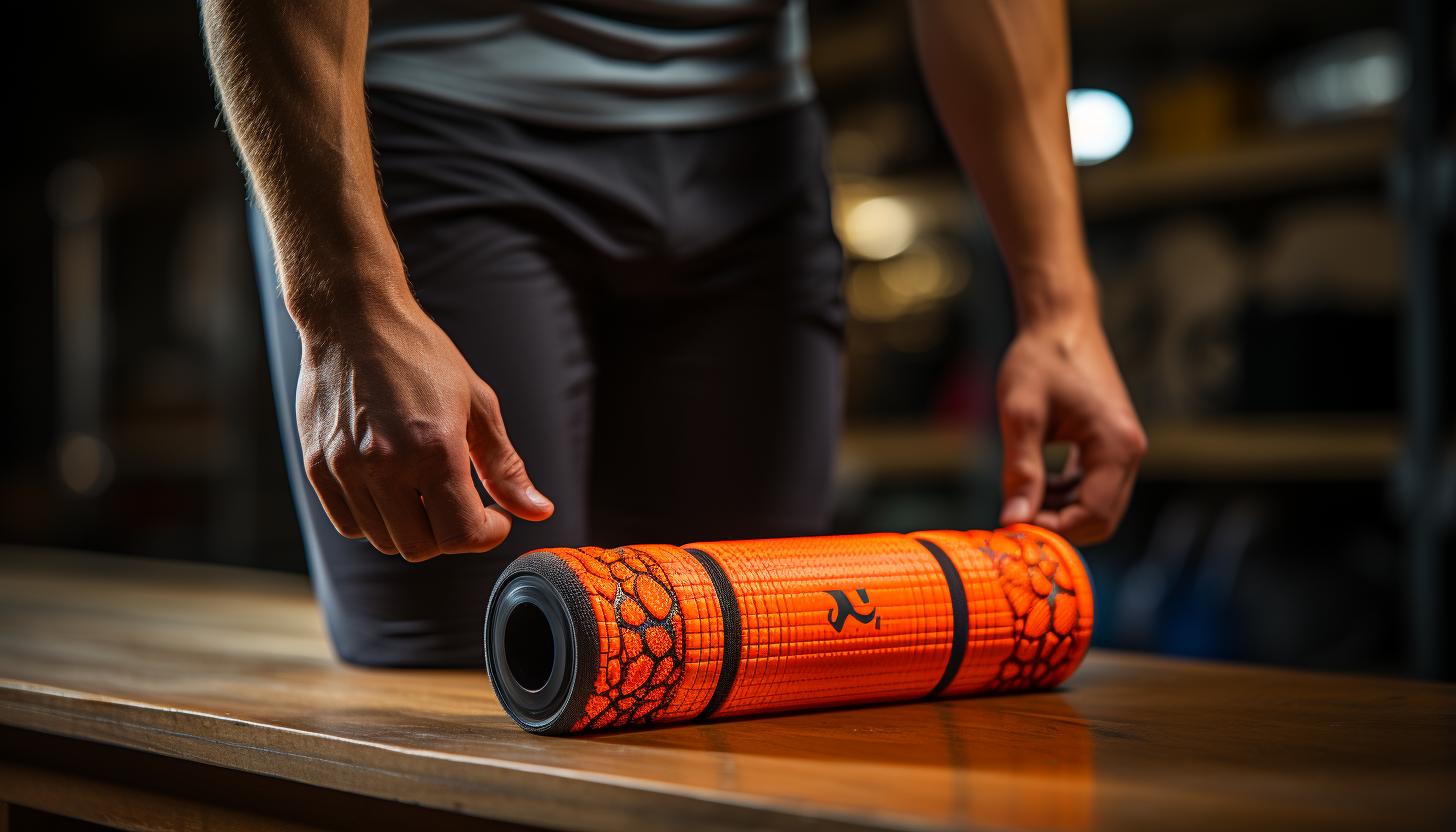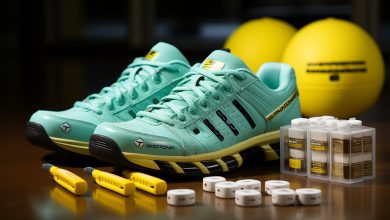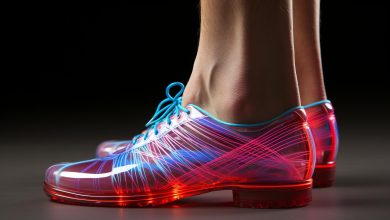The Runner’s Guide to IT Band Syndrome

Looking to conquer the challenges that come with running? Embark on a journey through the complexities of IT Band Syndrome, an ailment that can leave even the most seasoned runners feeling sidelined.
In this comprehensive guide, we’ll unravel the mysteries behind this common condition and equip you with the knowledge needed to overcome it. From understanding its causes and symptoms to exploring effective treatment and prevention strategies, you’ll soon be back on track towards optimal performance.
Lace up your shoes and let’s dive into The Runner’s Guide to IT Band Syndrome.
What Is IT Band Syndrome

IT band syndrome occurs when the iliotibial band becomes inflamed and causes pain on the outside of your knee. To understand this condition better, let’s delve into the anatomy of the IT band.
The iliotibial band is a thick band of fibrous tissue that runs along the outside of your thigh, attaching to your hip and knee. Its main function is to stabilize your knee during movement.
To prevent IT band syndrome or manage its symptoms, incorporating specific stretches can be beneficial. These stretches target the IT band and surrounding muscles, helping to improve flexibility and reduce tension. Some effective IT band stretches include standing or seated forward folds, pigeon pose, and foam rolling along the lateral side of your thigh.
By gaining knowledge about IT band anatomy and implementing appropriate stretches into your routine, you can potentially alleviate discomfort caused by IT band syndrome. However, it is important to note that understanding the causes and risk factors associated with this condition will provide further insights into prevention strategies.
Transitioning into our next section about ’causes and risk factors of IT Band Syndrome,’ let’s explore what leads to this common running injury.
Causes and Risk Factors of IT Band Syndrome

One common cause of IT band syndrome is overuse from repetitive movements. When you engage in activities that involve the repeated bending and straightening of your knees, such as running or cycling, it can put excessive strain on your iliotibial (IT) band. The IT band is a thick band of tissue that runs along the outside of your thigh, from your hip to your knee. Over time, this repetitive stress can lead to inflammation and irritation of the IT band, causing pain and discomfort.
It’s important to understand that while overuse is a primary cause of IT band syndrome, there are other factors that can contribute to its development as well. These include poor biomechanics, weak hip muscles, imbalances in muscle strength or flexibility, training errors such as sudden increases in mileage or intensity, and inadequate warm-up or cool-down routines.
To prevent IT band syndrome, it’s crucial to address these underlying causes. This may involve incorporating strength training exercises for your hips and thighs into your workout routine to improve muscle balance and stability. It’s also essential to gradually increase the duration and intensity of your activities rather than making sudden jumps. Additionally, implementing proper warm-up exercises before exercising and stretching afterward can help reduce the risk of developing IT band syndrome.
Understanding the causes and taking preventive measures will greatly reduce your chances of experiencing IT band syndrome. By adopting these strategies now, you’ll be better equipped to avoid this painful condition in the future.
Moving forward into the next section about ‘symptoms and diagnosis of IT Band Syndrome,’ it’s important to recognize how these signs can help you identify if you’re suffering from this condition.
Symptoms and Diagnosis of IT Band Syndrome

To determine if you may be experiencing IT band syndrome, it’s crucial to recognize the symptoms and consult with a healthcare professional for a proper diagnosis. Here are some key symptoms to look out for:
– Pain on the outside of your knee: The most common symptom of IT band syndrome is pain along the outside of your knee joint. This pain can range from mild discomfort to severe throbbing.
– Swelling and inflammation: Inflammation of the IT band can cause swelling around the knee area. If you notice any redness or warmth in this region, it could be a sign of IT band syndrome.
– Tightness or stiffness: Many runners with IT band syndrome experience tightness or stiffness in their outer thigh muscles. This can make it difficult to bend or straighten your leg fully.
– Clicking or popping sensation: Some individuals with IT band syndrome may feel a clicking or popping sensation when moving their knees. This is often accompanied by pain and can indicate irritation of the underlying tissues.
– Difficulty running downhill: If you find that running downhill exacerbates your knee pain, it could be a sign of IT band syndrome.
If you are experiencing any of these symptoms, it’s important to seek medical attention for an accurate diagnosis. A healthcare professional, such as a physical therapist specializing in treating runners, can provide guidance on appropriate treatment options including physical therapy exercises tailored specifically for runners with IT band syndrome.
Treatment and Prevention of IT Band Syndrome

If you’re experiencing symptoms of IT band syndrome, seeking medical attention and following a tailored treatment plan can help alleviate pain and prevent further injury. Treatment for IT band syndrome typically involves a combination of rest, physical therapy, and self-care techniques.
One effective self-care technique is using taping techniques to provide support and stability to the affected area. Taping can help reduce friction between the IT band and the underlying structures, allowing for improved movement and decreased pain. Your healthcare provider or physical therapist can demonstrate proper taping techniques and provide guidance on how long to wear the tape.
Another self-care technique that has shown promise in managing IT band syndrome is foam rolling. Foam rolling helps release tension in the muscles surrounding the IT band, promoting improved flexibility and reducing discomfort. By targeting tight areas such as the glutes, quadriceps, and hamstrings, foam rolling can help alleviate symptoms.
Incorporating both taping techniques and foam rolling into your treatment plan can be beneficial in relieving pain associated with IT band syndrome. However, it’s important to remember that these techniques should be used under the guidance of a healthcare professional or trained therapist.
Transitioning into rehabilitation and recovery for IT band syndrome, it’s essential to focus on strengthening exercises that target weak muscles contributing to improper biomechanics.
Rehabilitation and Recovery for IT Band Syndrome

As part of the rehabilitation and recovery process for IT band syndrome, it’s crucial to incorporate strengthening exercises that target weak muscles contributing to improper biomechanics. By focusing on these specific areas, you can help alleviate pain and prevent future injuries.
Here are some rehab exercises and foam rolling techniques that can aid in your recovery:
– Clamshells: Lie on your side with knees bent and feet together. Open your top knee while keeping your feet together, then slowly lower it back down. Repeat for 10-15 repetitions on each side.
– Side leg lifts: Lie on your unaffected side with legs extended. Lift your top leg up towards the ceiling, keeping it straight. Slowly lower it back down. Perform 10-15 reps per side.
– Bridges: Lie on your back with knees bent and feet flat on the ground. Lift your hips off the ground until your body forms a straight line from shoulders to knees. Hold for a few seconds, then lower back down. Perform 10-15 repetitions.
– Foam rolling: Use a foam roller to gently massage the IT band by rolling up and down along the outer thigh area. Apply enough pressure to feel a slight discomfort but not pain.
– IT band stretches: Stand next to a wall or use a chair for support. Cross one leg behind the other, lean away from the wall or chair until you feel a stretch along the outside of your hip and thigh.
Incorporating these rehab exercises and foam rolling techniques into your recovery plan can help improve muscle strength, flexibility, and overall function of the IT band region, leading to faster healing and prevention of future issues related to IT band syndrome.
Conclusion
In conclusion, if you’re an avid runner dealing with IT Band Syndrome, it’s crucial to address the issue promptly. With proper treatment and rehabilitation, you can get back on track and prevent future occurrences.
Remember that nearly 12% of all running injuries are attributed to IT Band Syndrome, causing considerable pain and frustration for runners like yourself.
Take care of your body by incorporating strength training exercises, cross-training activities, and implementing a gradual increase in mileage to reduce the risk of this debilitating condition.
Stay informed and run smart!






